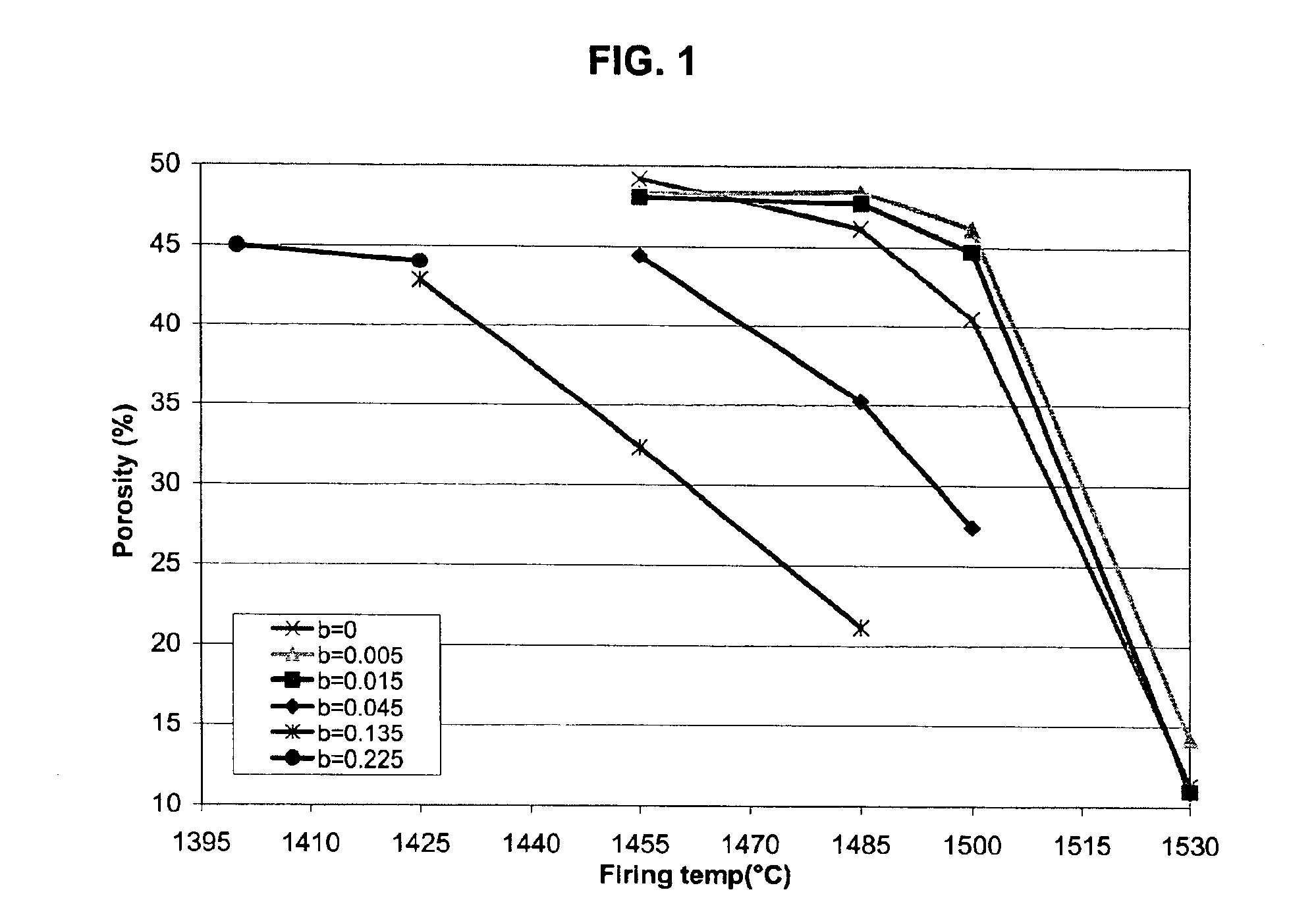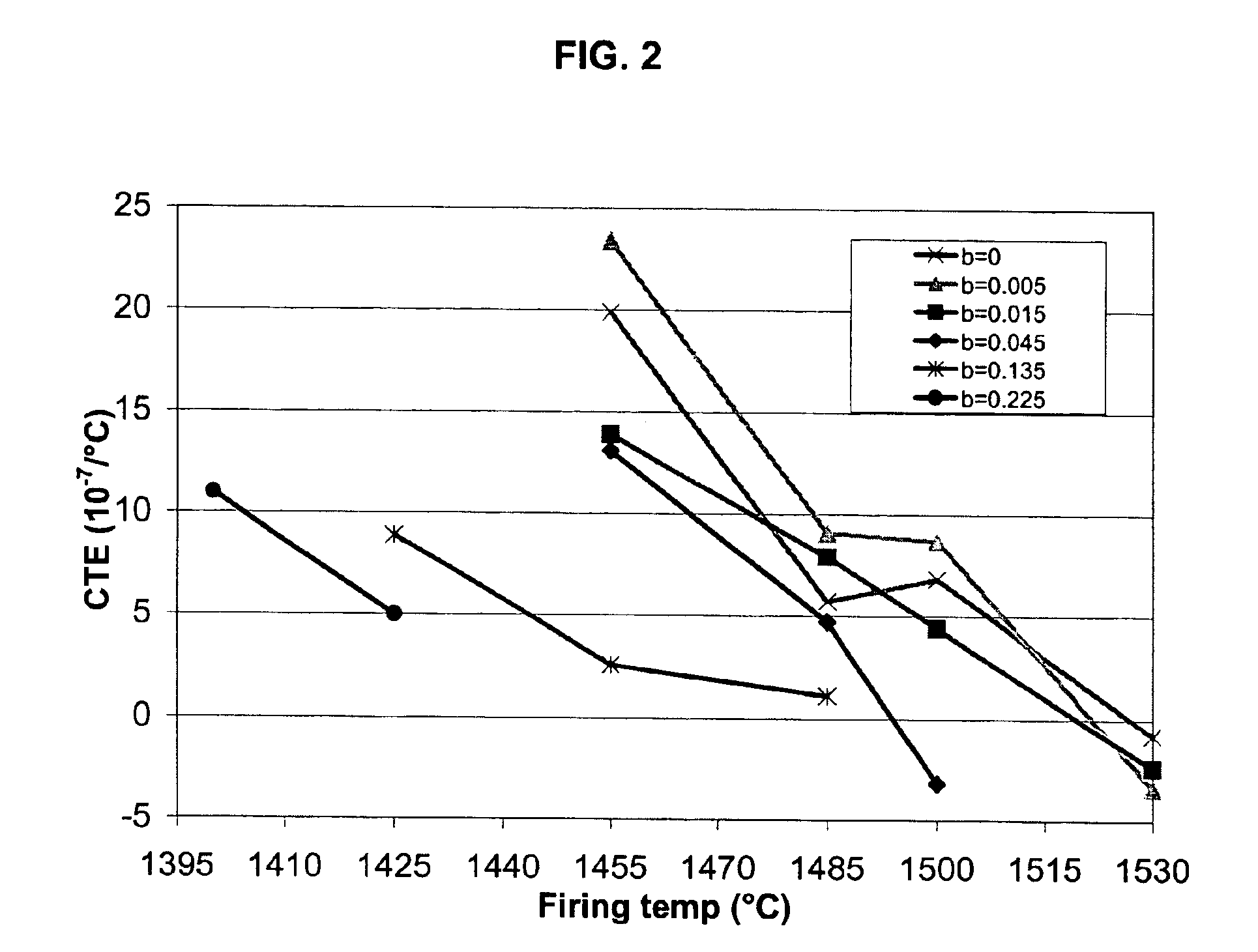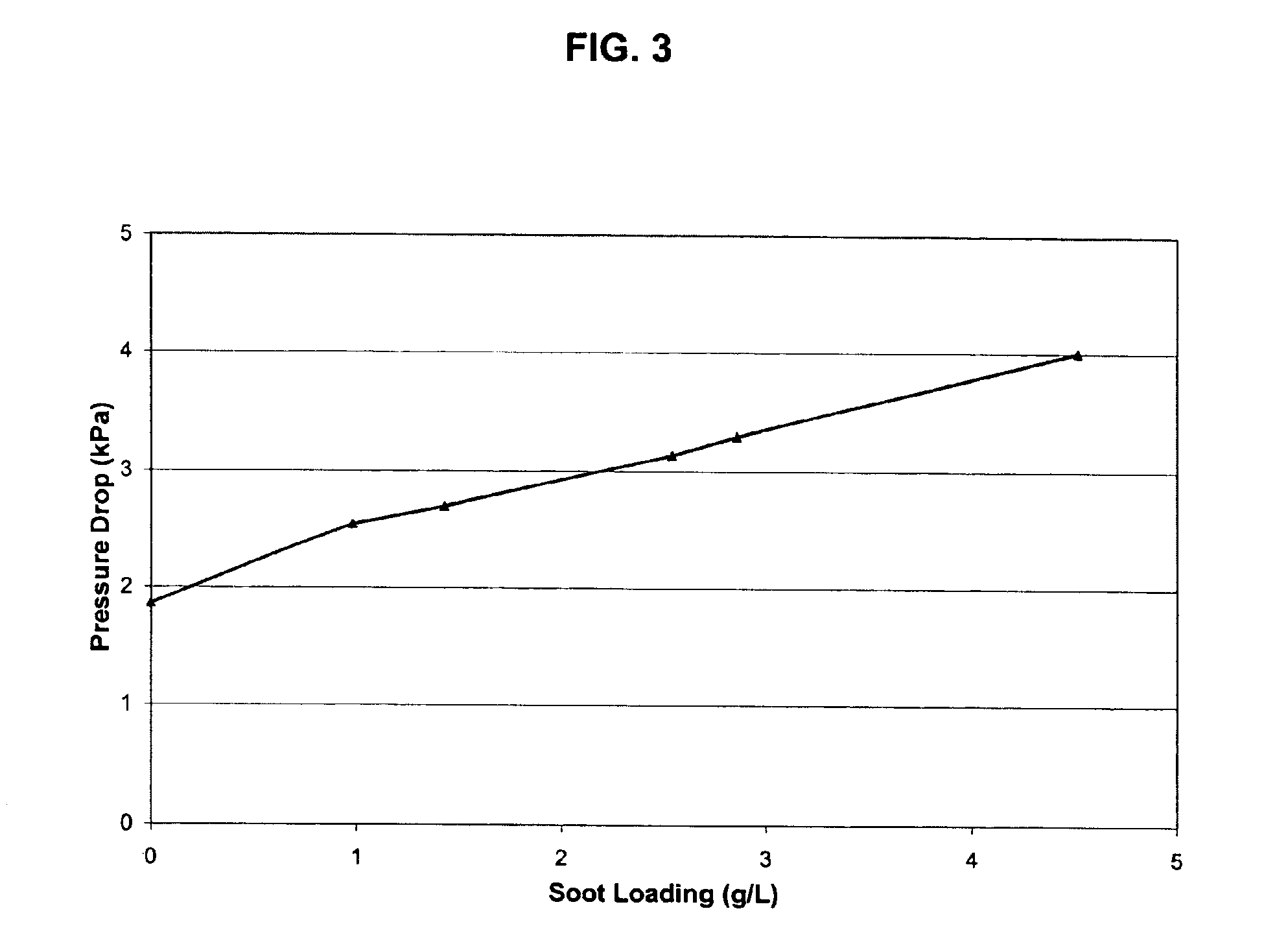Ceramic body based on aluminum titanate
a technology of titanium dioxide and ceramic bodies, applied in the direction of metal/metal-oxide/metal-hydroxide catalysts, machines/engines, chemical/physical processes, etc., can solve the problems of low thermal durability, and inability to meet the requirements of us
- Summary
- Abstract
- Description
- Claims
- Application Information
AI Technical Summary
Benefits of technology
Problems solved by technology
Method used
Image
Examples
examples
[0029]Experimental samples are prepared by weighing out the dry ingredients, mixing them with organic components and water, and kneading the mixture in a stainless steel muller to form a plastic mass. Tables 1-4 provides parts and proportions for the batch materials, together with the weight fractions for the compositional components of the inventive formula.
[0030]In the preparation of the samples, triethanolamine (TEA) is first mixed with water, and then with oleic acid and / or tall oil (dispersant). The resulting solution is stored at room temperature for 24 hours and then refrigerated overnight prior to use. The dry ingredients which include silica, titania, strontium carbonate, barium carbonate, calcium carbonated, iron oxide, alumina, alumina hydroxide, silicone resin, graphite, polyethylene beads and / or methyl cellulose binder are dry mixed in a muller. The tall oil / TEA / water solution is slowly added during continuous mixing to provide homogenization and plasticization.
[0031]Th...
PUM
| Property | Measurement | Unit |
|---|---|---|
| pore size | aaaaa | aaaaa |
| median pore size | aaaaa | aaaaa |
| thickness | aaaaa | aaaaa |
Abstract
Description
Claims
Application Information
 Login to View More
Login to View More - R&D
- Intellectual Property
- Life Sciences
- Materials
- Tech Scout
- Unparalleled Data Quality
- Higher Quality Content
- 60% Fewer Hallucinations
Browse by: Latest US Patents, China's latest patents, Technical Efficacy Thesaurus, Application Domain, Technology Topic, Popular Technical Reports.
© 2025 PatSnap. All rights reserved.Legal|Privacy policy|Modern Slavery Act Transparency Statement|Sitemap|About US| Contact US: help@patsnap.com



